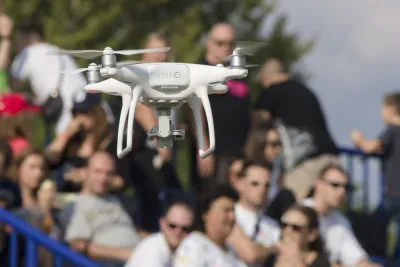Too often, smart city technology is described as an innocuous tool, but Adam Greenfield argues the technology acquiring this data will be used to distribute city resources, an inherently political act.

As smart cities collect more of our information and give cities more data, it's imperative that we understand that the automation of data collection does not make the information perfect or unbiased. In Radical Technologies: The Design of Everyday Life (which has been excerpted and adapted for the Guardian) Adam Greenfield argues that proponents of connected cities exaggerate the benefits of data. "Strongly implicit, is the presumption that whatever policies are arrived at in this way will be applied transparently, dispassionately and in a manner free from politics." No perfect responses to all civic problems exist, and pretending that algorithms can deliver such results endangers cities. "We need to understand that creating an algorithm intended to guide the distribution of civic resources is itself a political act," Greenfield argues.
Greenfield's arguments cover more than cities and deserve to be read in their entirety. While he's not trying to pretend the world can disconnect or should, his investigation centers around cautions like this one. "Advocates of smart cities often seem to proceed as if it is self-evident that each of our acts has a single, salient meaning, which can be recognised, made sense of and acted upon remotely by an automated system, without any possibility of error," a dangerous oversimplification.
FULL STORY: Rise of the machines: who is the ‘internet of things’ good for?

National Parks Layoffs Will Cause Communities to Lose Billions
Thousands of essential park workers were laid off this week, just before the busy spring break season.

Retro-silient?: America’s First “Eco-burb,” The Woodlands Turns 50
A master-planned community north of Houston offers lessons on green infrastructure and resilient design, but falls short of its founder’s lofty affordability and walkability goals.

Delivering for America Plan Will Downgrade Mail Service in at Least 49.5 Percent of Zip Codes
Republican and Democrat lawmakers criticize the plan for its disproportionate negative impact on rural communities.

Test News Post 1
This is a summary

Test News Headline 46
Test for the image on the front page.

Balancing Bombs and Butterflies: How the National Guard Protects a Rare Species
The National Guard at Fort Indiantown Gap uses GIS technology and land management strategies to balance military training with conservation efforts, ensuring the survival of the rare eastern regal fritillary butterfly.
Urban Design for Planners 1: Software Tools
This six-course series explores essential urban design concepts using open source software and equips planners with the tools they need to participate fully in the urban design process.
Planning for Universal Design
Learn the tools for implementing Universal Design in planning regulations.
EMC Planning Group, Inc.
Planetizen
Planetizen
Mpact (formerly Rail~Volution)
Great Falls Development Authority, Inc.
HUDs Office of Policy Development and Research
NYU Wagner Graduate School of Public Service





























